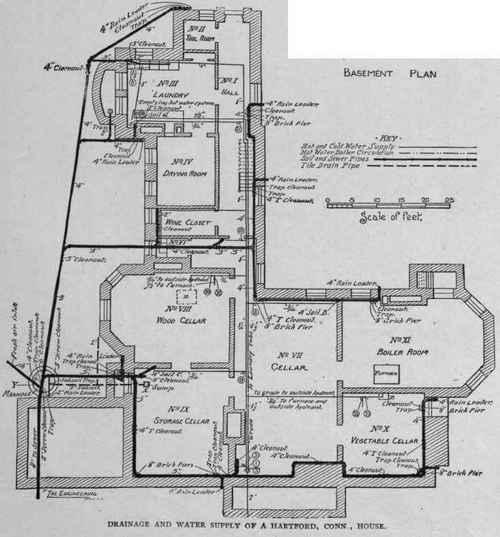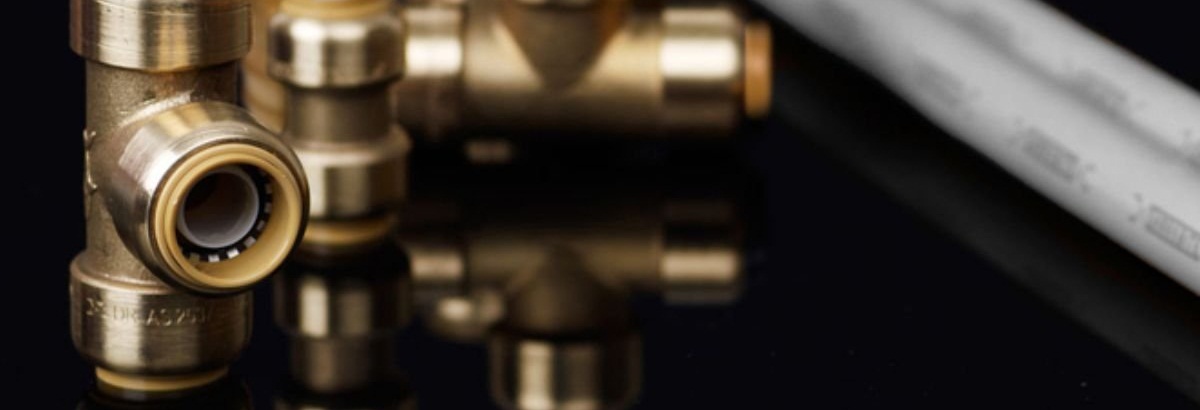What're your beliefs on Exploring Your Homes Plumbing Anatomy?

Recognizing exactly how your home's pipes system works is important for each property owner. From providing clean water for drinking, cooking, and bathing to securely eliminating wastewater, a well-maintained pipes system is essential for your family members's health and wellness and comfort. In this thorough guide, we'll explore the complex network that makes up your home's pipes and deal ideas on maintenance, upgrades, and handling usual problems.
Intro
Your home's pipes system is more than simply a network of pipes; it's a complex system that guarantees you have access to clean water and efficient wastewater removal. Recognizing its components and exactly how they work together can assist you avoid expensive repairs and make certain whatever runs efficiently.
Fundamental Components of a Pipes System
Pipes and Tubes
At the heart of your plumbing system are the pipes and tubes that bring water throughout your home. These can be made of different products such as copper, PVC, or PEX, each with its advantages in regards to sturdiness and cost-effectiveness.
Components: Sinks, Toilets, Showers, etc.
Components like sinks, bathrooms, showers, and bath tubs are where water is used in your house. Understanding just how these fixtures connect to the pipes system helps in detecting problems and intending upgrades.
Shutoffs and Shut-off Points
Shutoffs regulate the flow of water in your plumbing system. Shut-off shutoffs are important throughout emergencies or when you require to make repair services, allowing you to isolate parts of the system without interfering with water flow to the entire residence.
Water System
Key Water Line
The major water line links your home to the municipal water or a personal well. It's where water enters your home and is distributed to numerous components.
Water Meter and Pressure Regulator
The water meter actions your water usage, while a stress regulatory authority makes sure that water flows at a secure stress throughout your home's pipes system, preventing damages to pipes and components.
Cold Water vs. Warm water Lines
Recognizing the distinction between cold water lines, which provide water directly from the main, and warm water lines, which carry heated water from the hot water heater, aids in fixing and preparing for upgrades.
Water drainage System
Drain Water Lines and Traps
Drain pipelines carry wastewater far from sinks, showers, and commodes to the sewer or septic tank. Traps protect against sewage system gases from entering your home and additionally catch debris that might trigger obstructions.
Air flow Pipelines
Air flow pipelines allow air right into the water drainage system, protecting against suction that might slow down water drainage and create traps to empty. Appropriate ventilation is necessary for keeping the honesty of your pipes system.
Relevance of Appropriate Drain
Making sure appropriate water drainage protects against backups and water damages. On a regular basis cleaning up drains and keeping catches can avoid costly fixings and prolong the life of your plumbing system.
Water Heating System
Sorts Of Water Heaters
Hot water heater can be tankless or conventional tank-style. Tankless heaters warmth water on demand, while tanks save warmed water for instant usage.
Updating Your Plumbing System
Factors for Upgrading
Updating to water-efficient fixtures or changing old pipelines can enhance water quality, decrease water bills, and boost the value of your home.
Modern Pipes Technologies and Their Benefits
Discover technologies like clever leak detectors, water-saving commodes, and energy-efficient water heaters that can conserve money and lower ecological impact.
Cost Factors To Consider and ROI
Determine the ahead of time expenses versus long-term savings when taking into consideration pipes upgrades. Numerous upgrades spend for themselves with lowered utility bills and less repair work.
Just How Water Heaters Attach to the Plumbing System
Recognizing just how water heaters attach to both the cold water supply and hot water circulation lines helps in diagnosing issues like inadequate warm water or leaks.
Maintenance Tips for Water Heaters
Regularly flushing your hot water heater to remove sediment, inspecting the temperature setups, and evaluating for leakages can extend its life-span and improve energy efficiency.
Usual Plumbing Concerns
Leakages and Their Causes
Leaks can occur due to aging pipes, loosened fittings, or high water pressure. Addressing leaks promptly prevents water damages and mold development.
Obstructions and Obstructions
Clogs in drains and commodes are usually triggered by flushing non-flushable products or a buildup of oil and hair. Using drain displays and bearing in mind what goes down your drains pipes can avoid obstructions.
Signs of Pipes Troubles to Expect
Low water pressure, sluggish drains pipes, foul odors, or unusually high water bills are signs of prospective pipes troubles that should be attended to immediately.
Pipes Maintenance Tips
Routine Examinations and Checks
Arrange annual plumbing assessments to capture problems early. Try to find indicators of leakages, rust, or mineral buildup in faucets and showerheads.
DIY Maintenance Tasks
Simple jobs like cleansing tap aerators, looking for bathroom leakages using dye tablet computers, or shielding revealed pipes in cold climates can stop major plumbing problems.
When to Call a Specialist Plumber
Know when a pipes issue needs specialist proficiency. Trying complicated fixings without correct knowledge can lead to even more damages and higher repair service expenses.
Tips for Reducing Water Usage
Easy practices like repairing leaks promptly, taking much shorter showers, and running complete lots of washing and meals can save water and lower your utility bills.
Eco-Friendly Plumbing Options
Consider lasting plumbing products like bamboo for flooring, which is durable and environment-friendly, or recycled glass for counter tops.
Emergency situation Readiness
Steps to Take During a Plumbing Emergency
Know where your shut-off valves are located and exactly how to switch off the water in case of a ruptured pipe or major leak.
Significance of Having Emergency Situation Get In Touches With Convenient
Maintain call details for neighborhood plumbing professionals or emergency situation solutions conveniently offered for quick reaction throughout a pipes situation.
Ecological Impact and Conservation
Water-Saving Fixtures and Appliances
Installing low-flow faucets, showerheads, and bathrooms can dramatically lower water usage without sacrificing performance.
DIY Emergency Situation Fixes (When Relevant).
Short-lived fixes like using air duct tape to spot a leaking pipe or placing a pail under a dripping tap can decrease damage up until an expert plumbing professional gets here.
Verdict.
Recognizing the makeup of your home's plumbing system empowers you to maintain it effectively, conserving money and time on fixings. By complying with routine maintenance routines and staying notified regarding contemporary plumbing technologies, you can guarantee your pipes system runs successfully for many years to find.
HOW YOUR PLUMBING SYSTEM WORKS
Which Pipes Do What?
Blue lines = fresh water supply entering the building Red lines = hot water supply entering the building Grey lines = pipes carrying waste away from the building and venting pipes carrying gases away from the building (through the roof) YOUR MAIN PLUMBING SYSTEMS
There are two main plumbing systems that support your home s basic plumbing needs one that brings clean water into your home, and one that sends dirty water away from your home. Connected to the toilet, bath, shower, and other faucets in your home, these two systems keep your water flowing in the right directions.
ACCESSING FRESH WATER
Fresh and clean water is brought into your home through the main water supply line . Filtered through one pipe, this water is pressured to flow into the various fixtures in your home at any given time.
This water can be sourced from a well located on your property, a pond or river (mostly cottages), or, as in most cases, from the city s municipal water treatment centre. However, it is important to note that water that is untreated, such as the water siphoned from ponds or rivers, may not be safe to drink. Personal water supplies always need to be treated for hardness and contaminants before consumed.
MUNICIPAL WATER SUPPLIES
Improve taste and odour Remove sediment Eliminate hardness Reduce chlorine COLD WATER SUPPLY VS. HOT WATER SUPPLY
Cold water flows into your home or building through the service line, which then distributes hot or cold water to your fixtures. This line is most commonly run through a central column that runs floor to floor. Hot water runs in short and straight pipes as the longer the pipeline, the more heat that will be lost in the transfer. Having shorter pipes also allows residents to access hot water more quickly.
WASTE WATER SYSTEM
Your wastewater system is divided into two parts pipes that send wastewater away from your home and venting pipes that send sewer gas away from your home. Sewage water travels through pipes that flush the water and waste towards local sewers that are operated and managed by your city or town. Most sewer systems rely on gravity to move the wastewater to where it needs to go.
The further away from your toilet or sink, the larger wastewater pipes become. This allows for waste to be disposed of from various parts of your home or business at once without pipe blockages. The angle and flow of these pipes are also essential for keeping your waste pipes clear of build up.
https://harrisplumbing.ca/how-your-home-plumbing-system-works/

I am very intrigued by and I really hope you enjoyed reading my post. Sharing is good. Helping people is fun. Thank you for going through it.
Book Maintenance